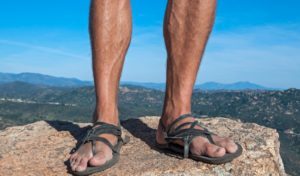Wearing shoes is a human practice older than people think. In ancient Egypt, we already used sandals made with palm or papyrus. But before wearing footwear, calluses served as protection on uncomfortable or slippery surfaces.

A study published last Wednesday in the journal Nature has discovered that thick calluses offer protection similar to that of most shoes that are currently used.
The analysis has also determined that calluses, which are of greater volume and hardness in people who usually walk barefoot than in those who wear shoes, do not alter the sensitivity of the nerves in the soles of the feet, unlike what is usually believed for Victor Alfaro, podiatrist of the Real Madrid first team and director of Podoactiva, the sensibility in the foot has 2 fundamental missions: “On the one hand, protect ourselves from possible injurious agents: a too hot surface, a sharp object. On the other hand, capture the information to maintain our position. If the sensitivity is affected, we must take special care because we can generate lesions on the foot more easily”.
In this research, conducted by paleontologists and anthropologists from Harvard University and scientists from Chemnitz (Germany), 103 people participated. Among them, 82 Kenyans and 22 Americans, of which half wear shoes regularly and the other half walk barefoot. These subjects have undergone sensory examinations of the sole of the foot, as well as measurements of the mechanical properties of the foot and the thickness of the calluses.

One of the authors of this analysis, Daniel E. Lieberman, made an important study about barefoot running 9 years ago that received a lot of attention and asked why nobody studied the habit of walking without shoes. “I enjoy walking barefoot and on one occasion I had the impression that even though my calluses had become thicker, I could still feel the ground. I wanted to try this and understand how and why”, he shares.
Lieberman, however, explains that the study does not mean that having calluses is good: “The shoes protect the foot more, but calluses allow us to feel the world better. So if you regularly walk barefoot, as our ancestors used to do, it is good to have calluses “, he explains.
Alfaro, on the other hand, explains that the callus is the response of the skin to a pressure zone and that when there are too many layers “the pressure increases and pain is generated. That stimulus makes you modify your way of stepping to avoid putting more pressure and that the pain encourages you to ask for an appointment in your podiatrist to solve it “.
This study was the first to measure the thickness of the plantar callus and its effects, and Lieberman hopes that it will continue to be investigated since there are hypotheses that say that it is possible that shoes “can cause problems along millions of steps “, concludes the paleontologist.
![]()
